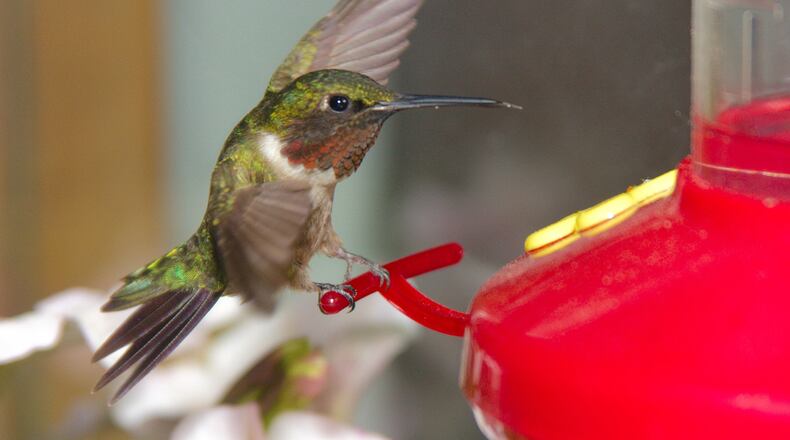It’s a perennial question this time of year: Where are the hummingbirds? This year, I’m one of those asking, why no hummers?
At our home in Decatur, we’ve had a hummingbird feeder up and full of nectar all spring, but, so far, only one hummer has shown up — a brief visit in April.
I take comfort, though, in the advice I’ve been passing along for years: Give it time. Ruby-throated hummingbird numbers often fluctuate year to year. A rule of thumb is that Georgia’s ruby-throats begin preparing for fall migration after July 4. The tiny birds — nearly all of them males at first — will start coming to feeders to gorge and fatten up for their arduous southbound trek to winter homes in Mexico and Central America. To make the trip, many of them will nearly double their average 3 grams of body weight within 7 to 10 days
The energy from the extra fat is crucial. Tens of thousands of ruby-throats will fly nonstop for up to 500 miles over the Gulf of Mexico to reach landfall in Mexico. Others will migrate along the Texas Gulf coast rather than over water.
Male ruby-throats are always the first to head south; many of them will be gone by the end of July. Females lag behind for a major reason: Most of them are still tending nests. After she is impregnated by the male, the female takes full control: She builds the tiny cup-shaped nest, incubates the eggs and feeds and tends the hatchlings all by herself.
Two broods of ruby-throats are normally produced each year in Georgia, the first in April or May and the second from June to August. After the young have fledged, they and their mothers also will start coming to feeders to store up energy for the journey south. They also will be joined by other hummers that nested farther north and are joining the annual movement south.
By the end of this month, hummingbird activity in our yards should be high, so keep your feeders up and full of fresh nectar to help the birds in their journey.
IN THE SKY: From David Dundee, Tellus Science Museum astronomer: The moon is in first quarter this weekend. Mercury is low in the west just after sunset. Venus rises a few hours before dawn. Jupiter is low in the west just after sunset. Saturn rises in the east just before sunset.
About the Author
Keep Reading
The Latest
Featured

